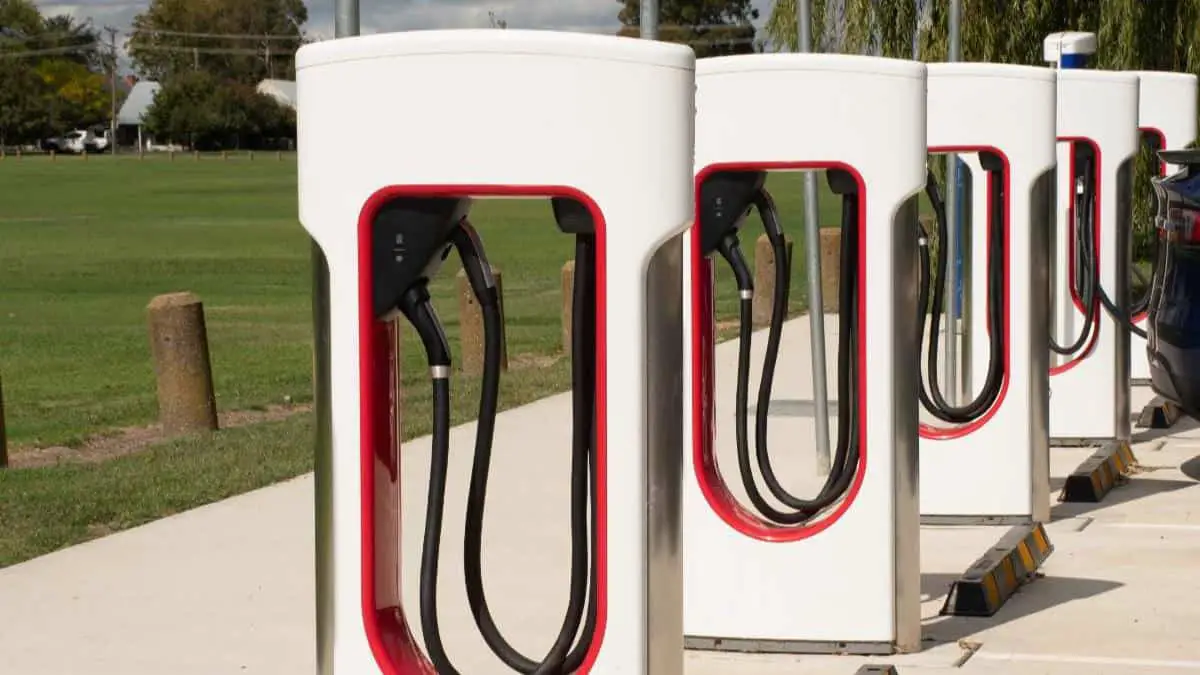California, a pioneering state in environmental policy, has implemented an ambitious mandate requiring a certain percentage of new vehicle sales to be carbon-free.
This article will explore the benefits and challenges associated with this new law while also highlighting potential solutions to these issues. Delve deeper with us as we unravel why this move could redefine our future transportation system.
Key Takeaways
- The Zero Emission Vehicle Mandate in California offers numerous benefits, including reduced air pollution and greenhouse gas emissions, improved public health, increased energy independence, and job creation in the clean energy sector.
- However, there are challenges associated with the mandate, such as high upfront costs for electric vehicles, limited charging infrastructure, potential job losses in the automotive industry, and limited vehicle options for consumers.
- To address these challenges, potential solutions include providing incentives and subsidies for electric vehicles, expanding the charging infrastructure network throughout California, implementing training and reemployment programs for displaced workers, and collaborating with automakers to increase vehicle options.

Benefits of Zero Emission Vehicle Mandate California
The Zero Emission Vehicle Mandate in California has led to a significant increase in the number of zero-emission vehicles on the state’s roads.
This increase in zero-emission traffic offers several benefits, such as reducing air pollution and greenhouse gas emissions, improving public health, increasing energy independence, and creating new job opportunities in the clean energy sector.
Reduced air pollution and greenhouse gas emissions
The Zero Emission Vehicle Mandate in California plays a crucial role in combating air pollution and reducing greenhouse gas emissions. The mandate’s emphasis on promoting electric vehicles and other zero-emission technologies directly tackles the issue of fossil fuel-combustion, a primary contributor to both local air quality issues and global climate change.
Vehicles powered by cleaner sources significantly lower pollutant release, contributing to improved air quality across region. Moreover, these zero-emission alternatives reduce carbon footprint which is instrumental in slowing down the pace of global warming.
Notably, EPA’s endorsement of California’s self-implemented emission regulations underscores the efficacy of this approach towards environmental preservation. A shift from gasoline and diesel-powered vehicles brings about remarkable reductions in harmful pollutants; for instance, according to an analysis targeting NMOG emissions alone suggests prospects of cutting them down by 10%.
Thus, through its steadfast commitment towards promoting low or no emission transport alternatives, the Golden State demonstrates how progressive policy-making can protect our environment while also answering modern mobility needs.
Improved public health
The switch to zero-emission vehicles, as part of California’s bold mandate, directly impacts the health of its residents. Emissions from traditional gasoline cars contribute significantly to air pollution, leading to a myriad of respiratory and cardiovascular diseases among the population.
Transitioning to electric vehicles dramatically reduces these harmful emissions, thereby improving air quality and public health.
California’s Zero Emission Vehicle Mandate is not just an environmental but also a significant public health initiative. A study found that cleaner air resulting from this policy has led to lesser cases of asthma attacks, heart conditions and premature deaths across the state.
Thus, apart from preserving our planet for future generations, electric vehicle adoption ushers in immediate health benefits for current residents too.
Increased energy independence
Embracing the Zero Emission Vehicle mandate in California has not only influenced environmental change, but also substantially increased the state’s energy independence. By shifting from gas-guzzling cars to electric vehicles, reliance on imported fossil fuels takes a downturn.
This move displaces potential geopolitical risks associated with oil and gas importation, thus reinforcing national security. As zero-emission vehicle adoption gains momentum, demand for locally-produced clean energy skyrockets supporting local economies and creating green jobs within the renewable energy sector.
The rise of electric cars is fueling a noteworthy revolution – an era where California can proudly control its own sustainable energy destiny.
Job creation in the clean energy sector
The Zero Emission Vehicle (ZEV) mandate in California has not only helped to reduce air pollution and greenhouse gas emissions but also created numerous job opportunities in the clean energy sector.
As manufacturers strive to meet the requirements of the mandate by producing more electric cars and other zero-emission vehicles, there is an increased demand for workers in manufacturing, production, and assembly lines.
Additionally, the growth of the ZEV market has led to job creation in related industries such as renewable energy, battery technology, and sustainable transportation solutions. With California’s commitment to clean transportation and its ambitious goals, the state has become a hub for innovation and research in clean energy technologies, attracting top talent and generating employment opportunities.

Challenges of Zero Emission Vehicle Mandate California
The challenges of California’s zero-emission vehicle mandate include high upfront costs for electric vehicles, limited charging infrastructure, potential job losses in the automotive industry, and limited vehicle options for consumers.
Keep reading to learn how these challenges can be addressed.
High upfront cost of electric vehicles
One of the challenges associated with the Zero Emission Vehicle (ZEV) mandate in California is the high upfront cost of electric vehicles. While EVs offer long-term savings through lower fuel and maintenance costs, their initial price tag can be a deterrent for many consumers.
According to important facts, despite this challenge, California aims to achieve 100% new zero-emission vehicle sales in the future. This underlines their commitment to reducing emissions and promoting environmental sustainability even though electric vehicles may seem expensive at first glance.
Limited charging infrastructure
Limited charging infrastructure is one of the challenges associated with California’s Zero Emission Vehicle mandate. The widespread adoption of electric vehicles relies heavily on the availability of charging stations, and without an adequate infrastructure in place, it can hinder the transition to zero-emission transportation.
Currently, there are areas where charging stations are scarce, making it inconvenient for electric vehicle owners to find a reliable source to recharge their cars. This limitation can deter potential buyers from investing in electric vehicles due to concerns about range anxiety or being stranded without a charging option.
To successfully implement the ZEV mandate, it is crucial that efforts be made to expand the charging infrastructure network throughout California, ensuring convenient access for all drivers.
Potential job losses in the automotive industry
The zero-emission vehicle mandate in California brings both benefits and challenges. One of the challenges is the potential job losses in the automotive industry. As gas-powered cars phase out, approximately 32,000 mechanics in California could face unemployment by 2040.
This shift in employment poses a significant challenge for those who rely on traditional internal combustion engine vehicles for their livelihoods. However, it’s important to note that the implementation of this mandate also creates new opportunities for job creation in the clean energy sector, as electric companies and other related industries will require skilled workers to support the transition towards zero-emission vehicles.
Adaptation programs and reemployment initiatives can help mitigate these potential job losses by providing training and alternative career pathways for those affected by the change.
Limited vehicle options for consumers
Consumers face a significant challenge when it comes to the limited options available for zero-emission vehicles in California. While the demand for electric cars is increasing, there are still relatively few models on the market compared to traditional gasoline-powered vehicles.
This lack of variety makes it challenging for consumers to find a zero-emission vehicle that meets their specific needs and preferences. It also limits their ability to choose from different price ranges, sizes, and features.
As a result, some potential buyers may be hesitant to switch to electric vehicles due to the limited selection available.

Potential Solutions and Mitigations
To address the challenges of the zero emission vehicle mandate California, potential solutions and mitigations include providing incentives and subsidies for electric vehicles, expanding the charging infrastructure, implementing training and reemployment programs for displaced workers, and collaborating with automakers to increase vehicle options.
Incentives and subsidies for electric vehicles
California offers a range of incentives and subsidies to encourage the adoption of electric vehicles:
- Various rebates are available for the purchase of different types of electric vehicles, such as FCEVs, EVs, PHEVs, and zero-emission motorcycles. These California rebates can significantly lower the upfront cost of purchasing an electric vehicle.
- The rebate amounts range from $750 to $7,500, depending on the type of vehicle. This financial assistance makes electric vehicles more affordable for consumers.
- These incentives aim to promote equity and access to electric vehicles for all communities in California. By offering subsidies, the state helps ensure that more people have the opportunity to benefit from zero-emission transportation.
- In addition to rebates, there are also tax credits available for purchasing or leasing an electric vehicle. These tax credits can further reduce the overall cost of owning an electric vehicle.
Expansion of charging infrastructure
To support the increased adoption of zero-emission vehicles in California, it is crucial to expand the charging infrastructure. The availability of charging stations plays a key role in addressing range anxiety concerns and encouraging consumers to switch to electric vehicles. Here are some important points regarding the expansion of charging infrastructure:
- Policies have been implemented to ensure equitable access to clean charging stations in California.
- The California Electric Infrastructure Plan aims to improve and expand the state’s electric vehicle charging infrastructure.
- Various companies are actively involved in the development and operation of EV charging infrastructure in California.
- The Biden-Harris Administration has announced incentives to lower the cost of EVs and promote the expansion of EV charging infrastructure.
- The Global Electric Vehicle Outlook 2022 highlights the need for sufficient charging infrastructure to support the growing number of EVs.
- Increasing the number of EV charging stations will contribute to meeting net – zero emissions targets by 2050.
- The expansion of charging infrastructure in California will facilitate the increased adoption of zero-emission vehicles and help achieve the state’s emission reduction goals.
Training and reemployment programs for displaced workers
Training and reemployment programs for displaced workers play a crucial role in addressing the challenges of California’s Zero Emission Vehicle Mandate. These programs provide support and opportunities for workers as they transition to the zero-emission vehicle industry. Here are some important facts about these programs:
- A report shows that training and reemployment programs can be implemented to support displaced workers in the transition to a zero-emission vehicle industry.
- There already exist feasible, road-tested workforce and economic development mechanisms that are complementary to California’s Zero-Emission Vehicle Program.
- The state of Maine offers re – employment support programs that apply to all unemployed workers, which can serve as a model for other regions.
- Achieving net zero emissions by 2050 is a goal that can be supported by training and reemployment programs for displaced workers.
Collaboration with automakers to increase vehicle options
Automakers and the state of California are collaborating to address the limited vehicle options for consumers as part of the Zero Emission Vehicle (ZEV) mandate. This collaboration aims to offer more choices for consumers, ensuring that they have a wide range of zero-emission vehicles to choose from. Here are some key points regarding this collaboration:
- The partnership seeks to increase the availability of vehicle options that meet the ZEV requirements. By working together, California and automakers can encourage the development and production of more zero-emission vehicles, providing consumers with a greater selection.
- This collaboration is crucial as it helps address concerns related to limited vehicle options. With more choices available, consumers can find a zero-emission vehicle that suits their preferences, needs, and budget.
- Through this partnership, automakers are actively investing in research and development to innovate and expand their electric vehicle offerings. They understand the importance of meeting consumer demand for sustainable transportation options.
- Collaboration between California and automakers also involves ongoing dialogue and cooperation regarding technological advancements in battery technology, charging infrastructure, and overall industry trends. By staying connected, both parties can align their efforts towards achieving a successful transition to a zero-emission vehicle fleet.
- The shared goal is not only to comply with ZEV standards but also to exceed them with innovative solutions. Automakers recognize the market potential for zero-emission vehicles, considering both California’s regulatory framework and global trends towards cleaner transportation.
Conclusion
The zero-emission vehicle mandate in California has numerous benefits, including reduced air pollution and improved public health. It also promotes job creation in the clean energy sector and increases energy independence.
However, there are challenges such as high upfront costs for electric vehicles, limited charging infrastructure, potential job losses in the automotive industry, and limited vehicle options for consumers.
Solutions like incentives for electric vehicles, expanding charging infrastructure, retraining programs for displaced workers, and collaboration with automakers can help mitigate these challenges.
Overall, while there are pros and cons to the zero-emission vehicle mandate in California, its positive impact on the environment and public health makes it a crucial step towards a sustainable future.
FAQs
1. What are the pros of the Zero Emission Vehicle Mandate in California?
The Zero Emission Vehicle Mandate in California promotes cleaner air and reduced greenhouse gas emissions, leading to improved public health and a healthier environment. It also encourages technological innovation and economic growth in the electric vehicle industry.
2. What are the cons of the Zero Emission Vehicle Mandate in California?
Critics argue that the mandate places an unnecessary burden on automakers, potentially increasing vehicle costs for consumers. There are concerns about limited charging infrastructure, range anxiety for drivers, and potential strain on the electrical grid as more electric vehicles are adopted.
3. How does the Zero Emission Vehicle Mandate impact car manufacturers?
The mandate requires car manufacturers to produce and sell a certain percentage of zero-emission vehicles (ZEVs) each year within California’s market. This can be challenging for manufacturers who have traditionally focused on gasoline-powered vehicles but presents opportunities for those investing in ZEV technology.
4. What are some potential benefits of transitioning to zero-emission vehicles?
Transitioning to zero-emission vehicles reduces reliance on fossil fuels, decreases carbon emissions contributing to climate change, and improves overall air quality by reducing pollutants emitted from internal combustion engines. It also helps reduce noise pollution associated with traditional cars.
- Tesla Charger Installation Cost (Home Setups) - March 1, 2024
- Tesla Phone Key Disconnected (Troubleshooting Guide and Quick Fixes) - March 1, 2024
- Tesla FSD 12 (Explained) - March 1, 2024